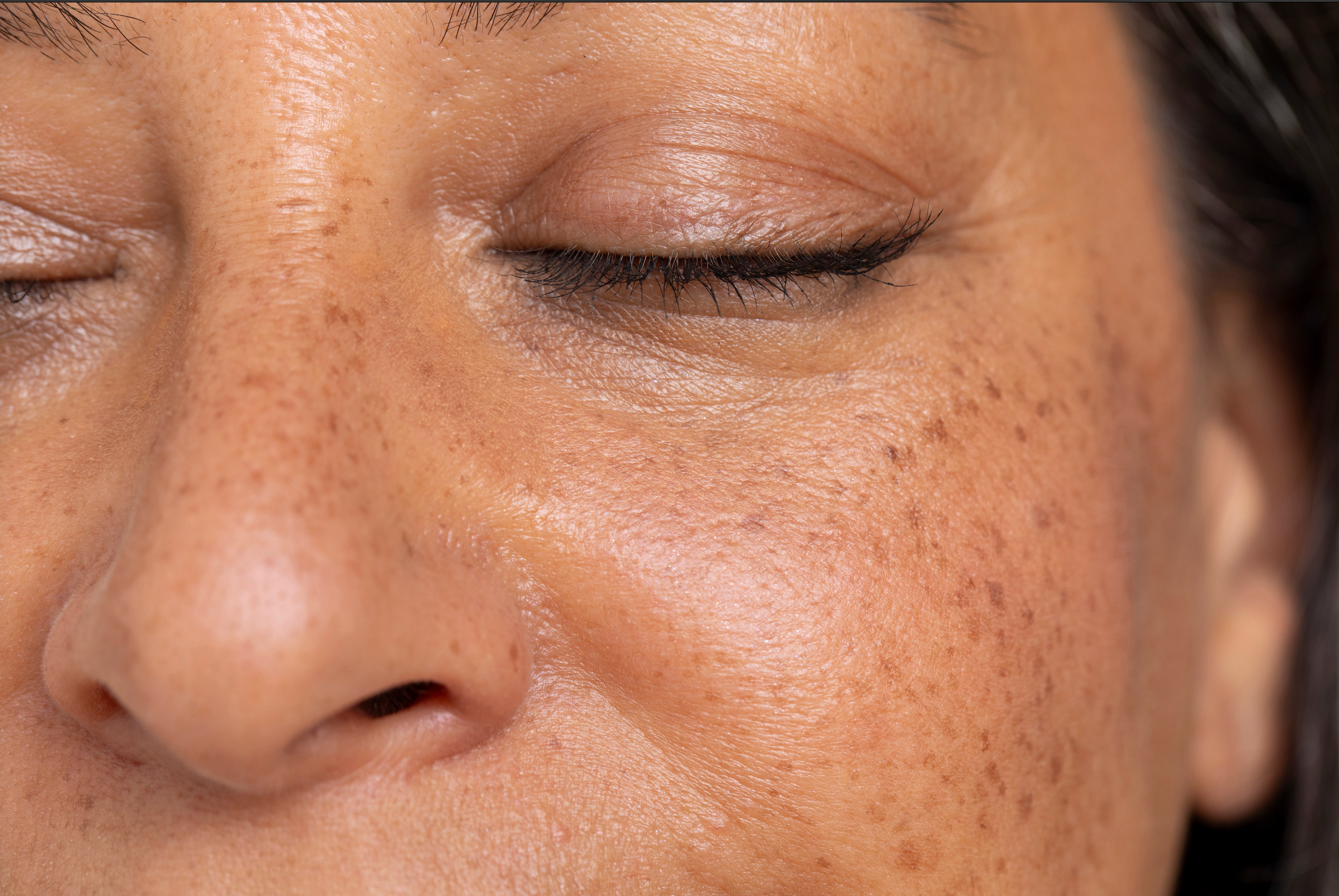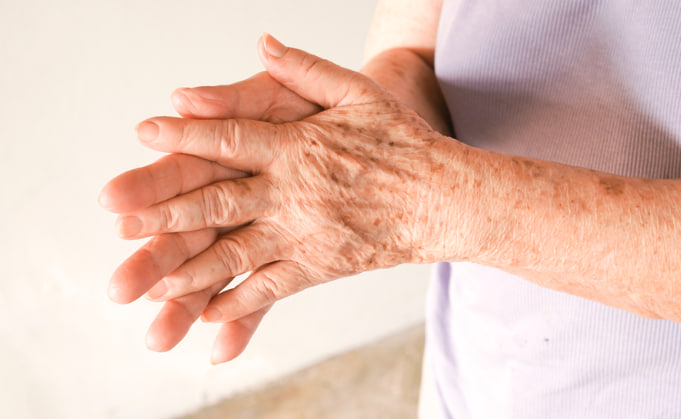As the years go by, it is common to notice small, flat, darker patches appearing on areas of skin that are frequently exposed to the sun, such as the hands, face, shoulders, and forearms. These marks are often called age spots, liver spots, or sun spots. While they are generally harmless, they can be a cosmetic concern for many people, especially those over the age of 60.
Although age spots are often linked to years of sun exposure, research suggests that nutrition—particularly adequate intake of the mineral selenium—may help protect skin health. By understanding the causes of age spots and how selenium supports skin resilience, individuals can take a proactive approach to maintaining a more even skin tone.

What Are Age Spots?
Age spots are benign areas of hyperpigmentation caused by an overproduction of melanin, the natural pigment responsible for skin, hair, and eye color. Over time, repeated exposure to ultraviolet (UV) radiation from the sun or tanning equipment can cause melanin to accumulate in certain areas, leading to these darker patches.
They typically appear on:
-
The backs of hands
-
The face
-
The shoulders and upper back
-
The forearms and chest
According to the American Academy of Dermatology (AAD), age spots are more common in adults over 50, but they can occur in younger individuals who spend significant time in the sun without adequate protection.

Causes Beyond Sun Exposure
While UV radiation is the primary cause, other factors may contribute:
-
Natural aging: As skin ages, its ability to regenerate and repair diminishes, making pigment changes more likely.
-
Genetics: A family history of age spots can increase the likelihood of developing them.
-
Environmental stressors: Air pollution and exposure to certain chemicals can accelerate skin changes.
It is important to note that age spots are not cancerous. However, new or changing skin marks should be evaluated by a qualified healthcare provider to rule out other skin conditions.
Selenium: An Essential Trace Mineral for Skin Health
Selenium is a trace mineral—needed in small amounts but crucial for many bodily processes. The National Institutes of Health (NIH) lists several important functions of selenium, including:
-
Acting as an antioxidant to help protect cells from damage
-
Supporting a healthy immune system
-
Regulating thyroid hormone activity
-
Assisting in DNA synthesis
For skin health, selenium’s antioxidant role is especially valuable. It helps neutralize free radicals, unstable molecules generated by UV exposure and environmental pollution that can damage skin cells and contribute to visible aging.

Selenium and UV Protection
Scientific studies have explored selenium’s role in reducing UV-induced skin damage. For example:
-
Research published in the American Journal of Clinical Nutrition found that adequate selenium intake, combined with other antioxidants like vitamins E and C, may help minimize oxidative stress in skin cells.
-
Laboratory studies suggest selenium may help limit the formation of abnormal pigmentation patterns caused by sun damage.
While selenium cannot replace sunscreen or physical sun protection, it may provide an internal layer of defense by helping cells manage oxidative stress.
Daily Selenium Requirements
The Recommended Dietary Allowance (RDA) for selenium, according to the NIH, is:
-
Adults: 55 micrograms (mcg) per day
-
Pregnant individuals: 60 mcg per day
-
Breastfeeding individuals: 70 mcg per day
Most healthy adults can meet their selenium needs through a varied diet. However, deficiencies can occur, particularly in areas where soil selenium content is low, which affects the selenium levels in plant-based foods and animal products.

Food Sources of Selenium
Several common foods are rich in selenium and can be incorporated into a balanced diet:
-
Brazil nuts – Just one or two can exceed the daily requirement.
-
Seafood – Tuna, sardines, halibut, and shrimp are good sources.
-
Meats and poultry – Turkey, chicken, and beef contain moderate amounts.
-
Eggs – Provide selenium along with protein and other nutrients.
-
Whole grains – Brown rice, oats, and whole wheat products.
-
Seeds and mushrooms – Sunflower seeds, cremini, and shiitake mushrooms.
Because Brazil nuts are extremely high in selenium, they should be consumed in moderation to avoid excessive intake.
Signs of Selenium Deficiency
True selenium deficiency is uncommon in the United States and many other countries, but it may occur in individuals with restricted diets or certain health conditions. Possible signs, according to the NIH, include:
-
Weakness or fatigue
-
Reduced immune function
-
Hair or nail changes
If a deficiency is suspected, a healthcare provider can confirm it with a blood test.

Risks of Excess Selenium
While adequate selenium supports health, too much can be harmful. The Tolerable Upper Intake Level (UL) for adults is 400 mcg per day. Consistently exceeding this amount can cause a condition called selenosis, which may lead to:
-
Gastrointestinal upset
-
Hair loss
-
Brittle nails
-
Neurological symptoms in severe cases
For this reason, supplementation should only be done under professional guidance, particularly for those already consuming selenium-rich foods.
Supporting Skin Health Beyond Selenium
While selenium can be an important part of skin care from the inside out, it should be combined with other evidence-based practices to prevent or reduce age spots:
-
Use sunscreen daily – Broad-spectrum SPF 30 or higher, reapplied every two hours during sun exposure.
-
Wear protective clothing – Wide-brimmed hats, long sleeves, and UV-protective fabrics.
-
Avoid peak sun hours – Seek shade between 10 a.m. and 4 p.m.
-
Maintain skin hydration – Drink water regularly and use gentle, fragrance-free moisturizers.
-
Eat a varied diet – Include fruits, vegetables, healthy fats, and protein for overall skin support.
-
Avoid smoking – Tobacco smoke accelerates skin aging and pigment changes.
A Natural, Nutrient-Supportive Approach
Managing age spots and supporting skin health is a multifaceted process. While topical treatments like dermatological procedures and over-the-counter creams can play a role, dietary strategies such as ensuring sufficient selenium intake offer an additional, natural layer of support.
By combining a nutrient-rich diet, smart sun protection habits, and regular skin checks, individuals can help maintain healthier, more even-toned skin over time.
